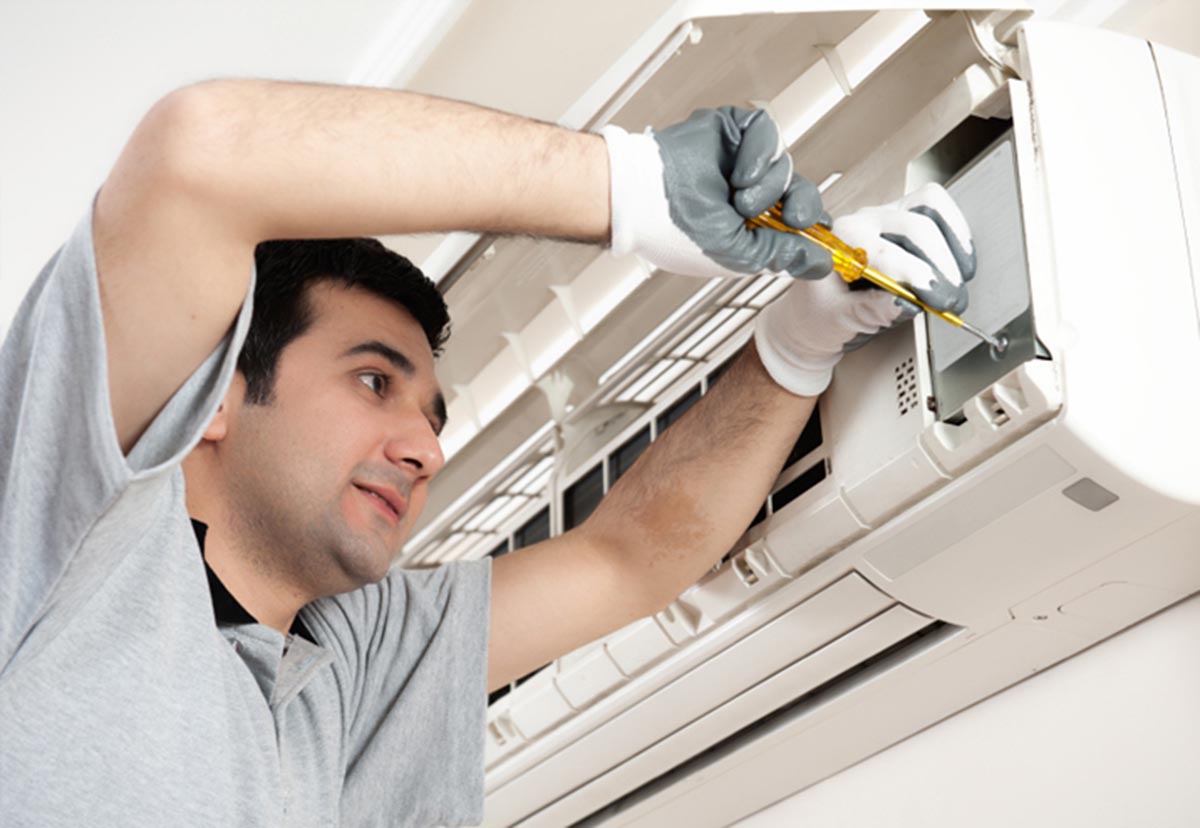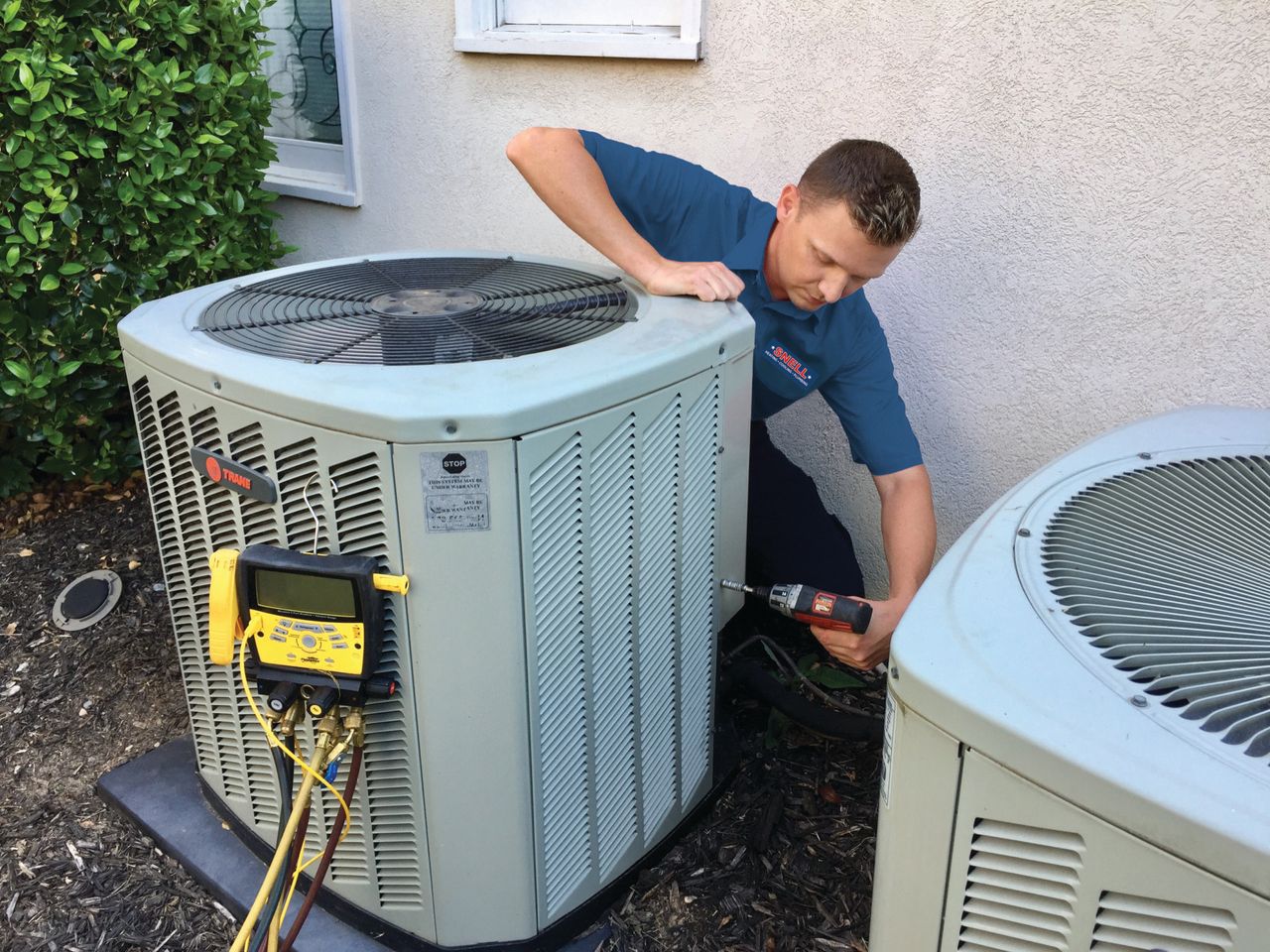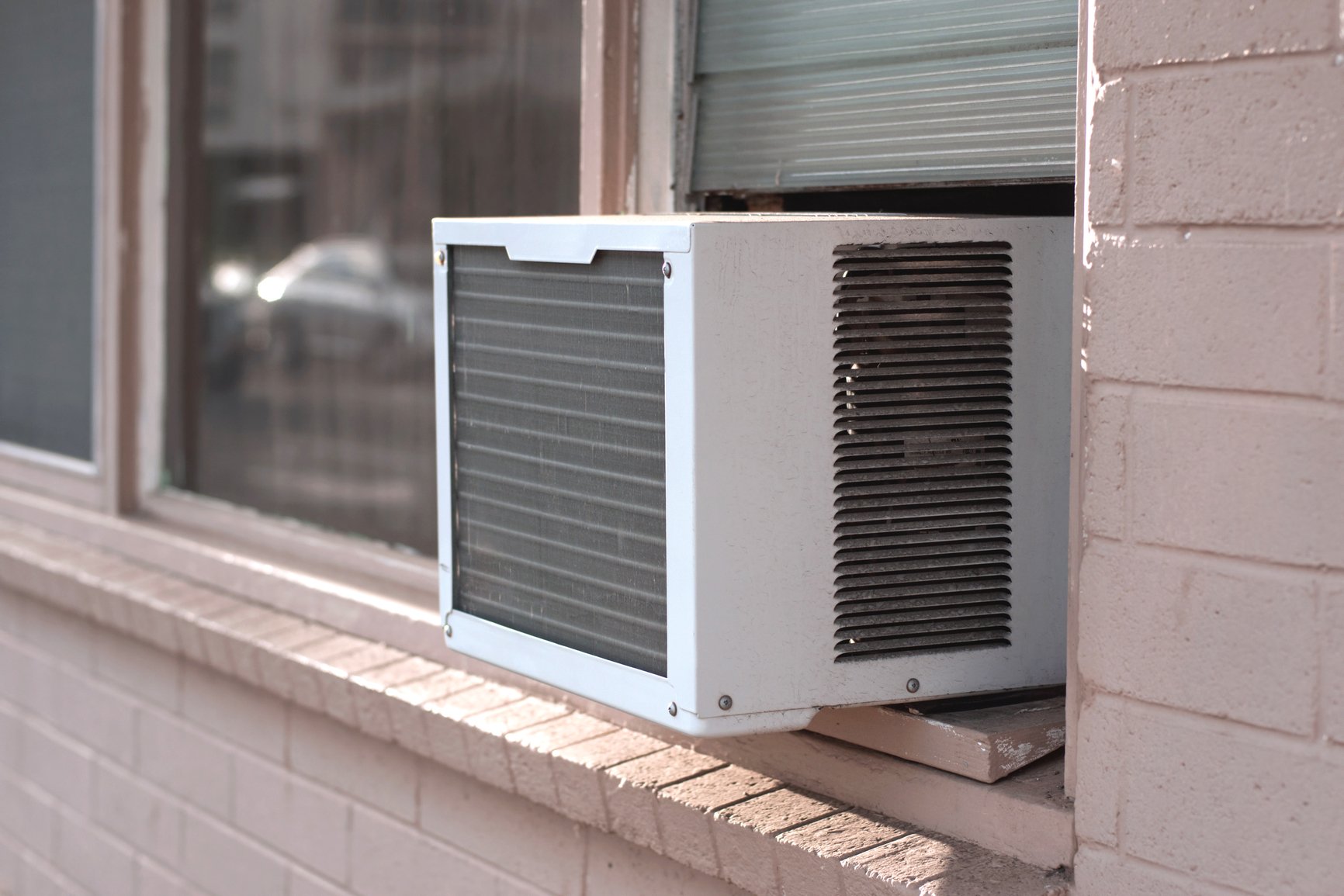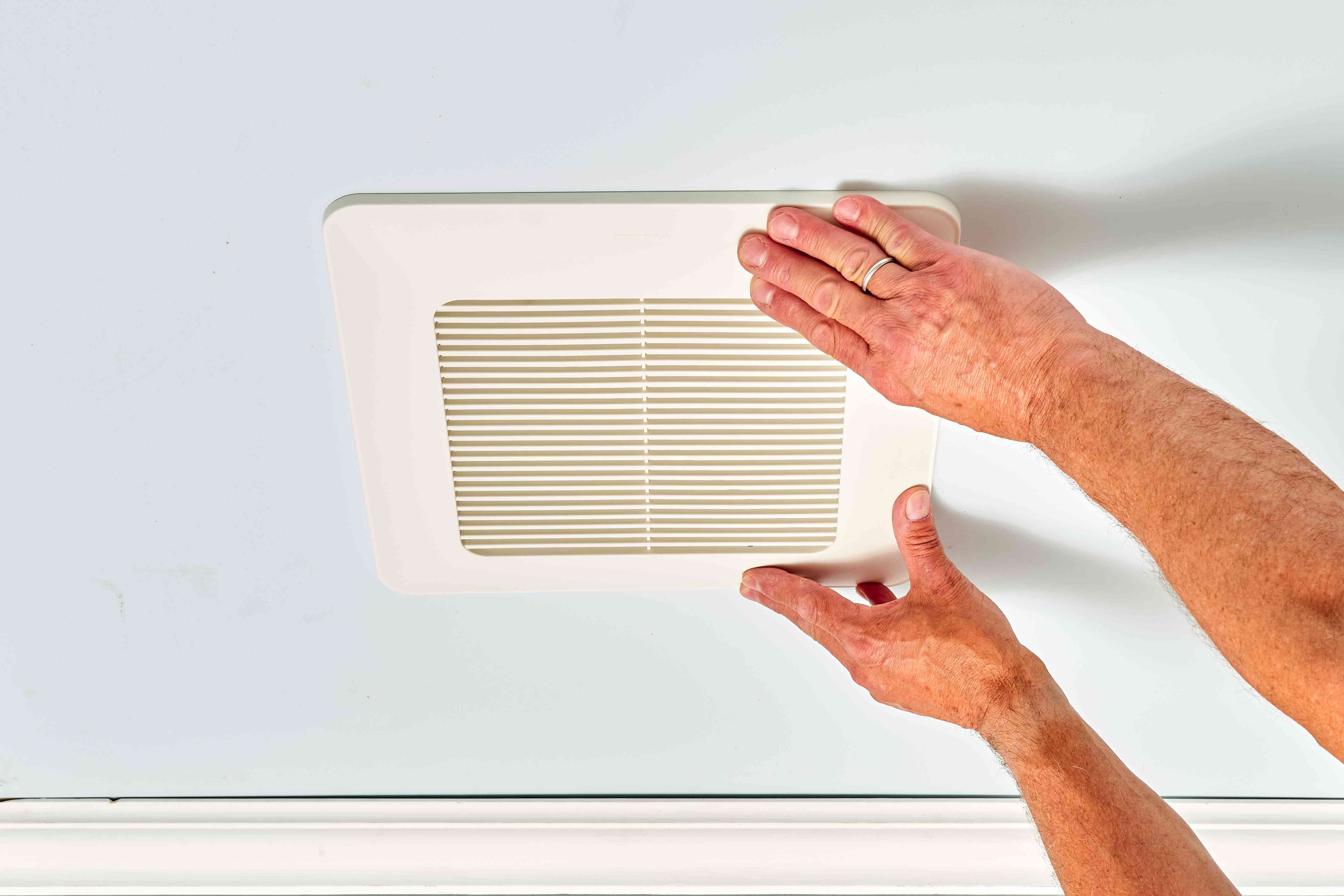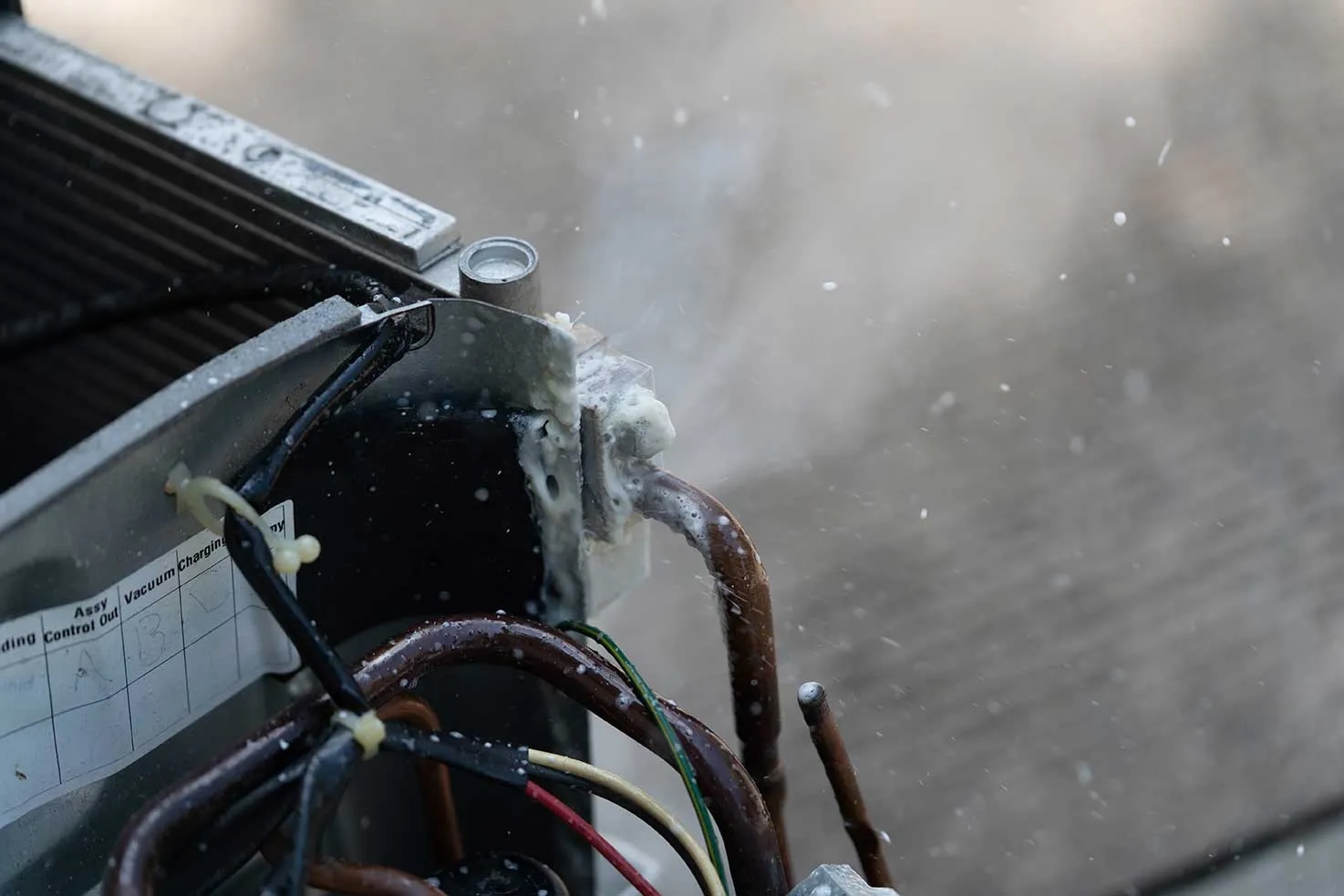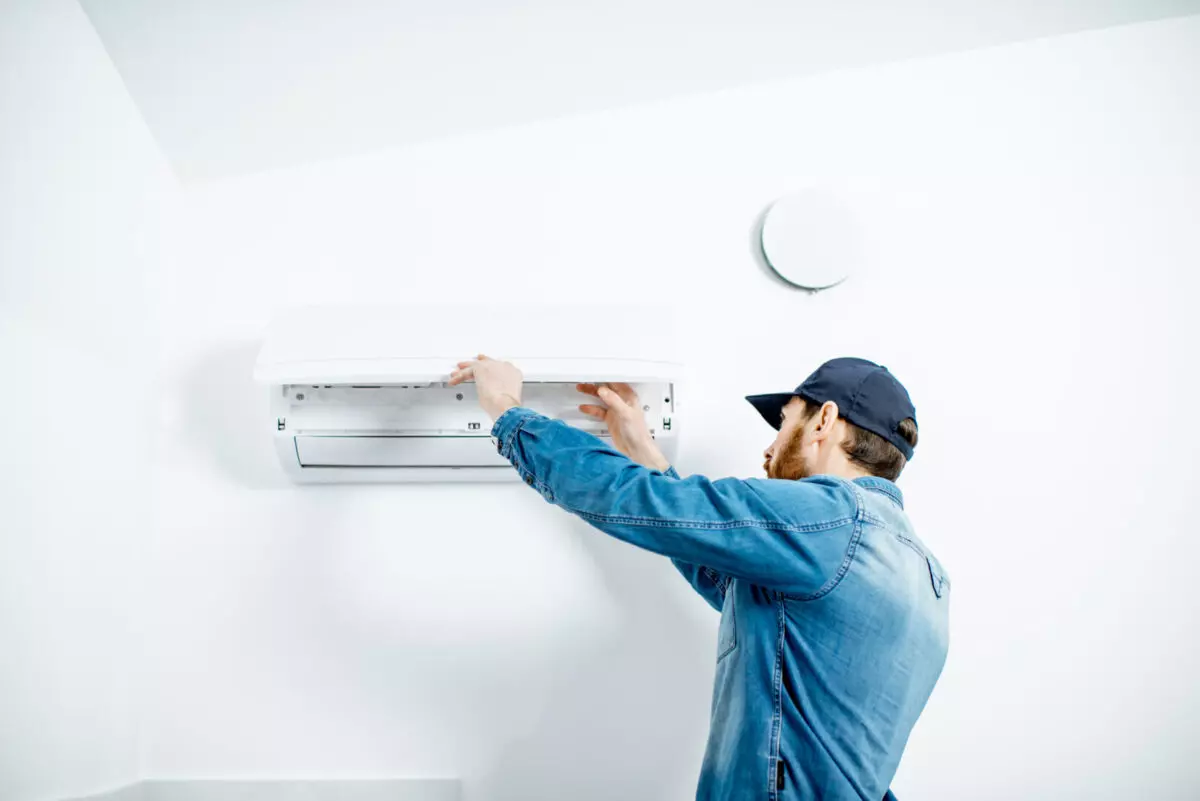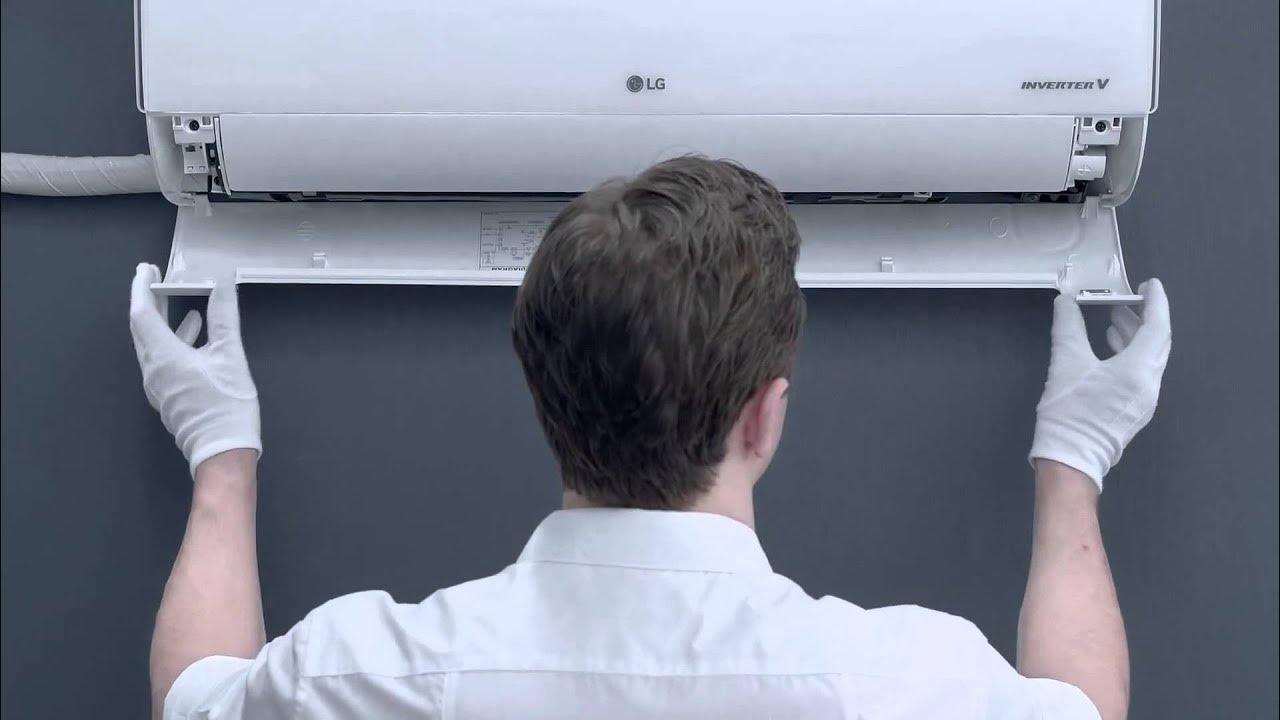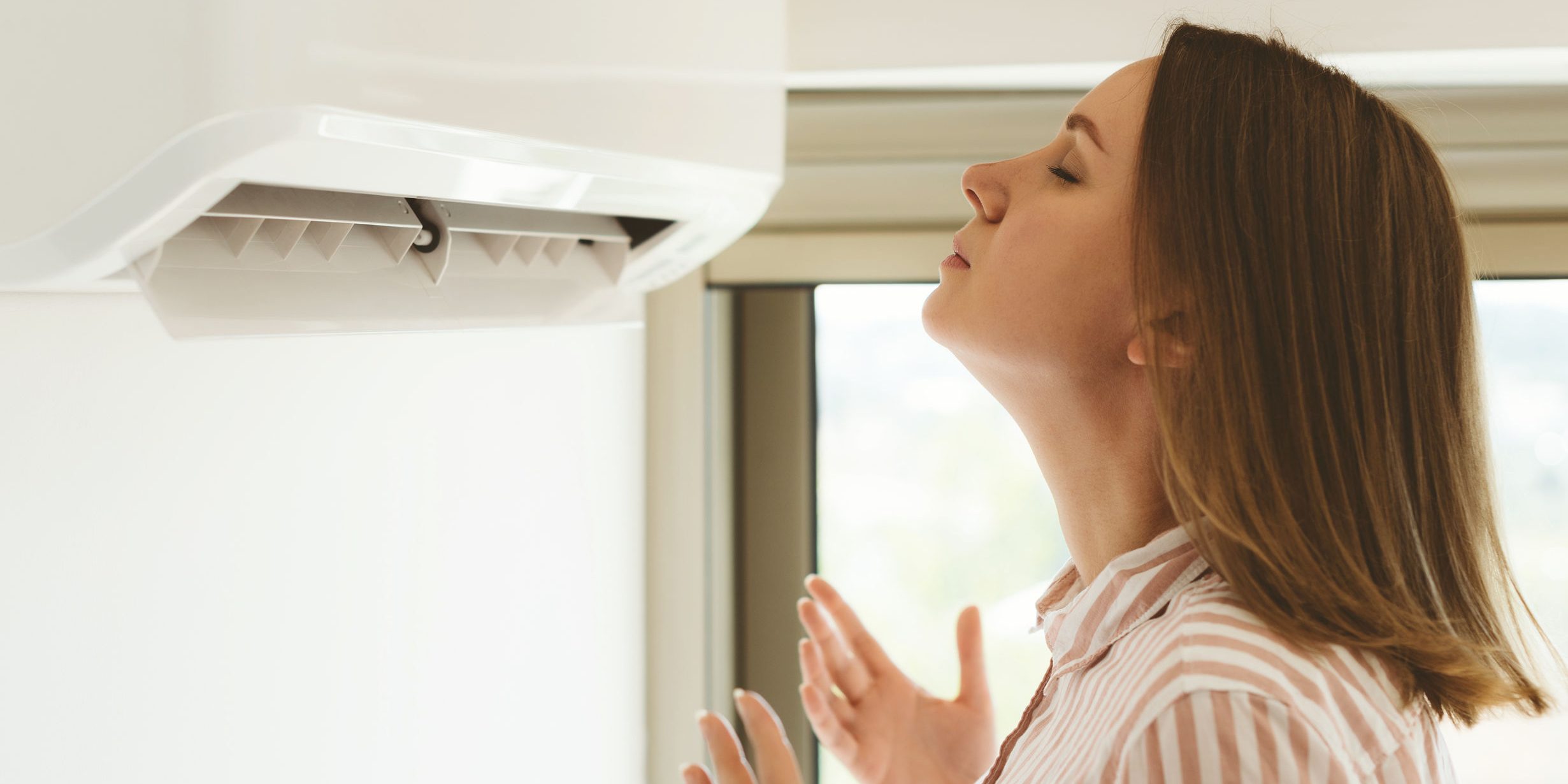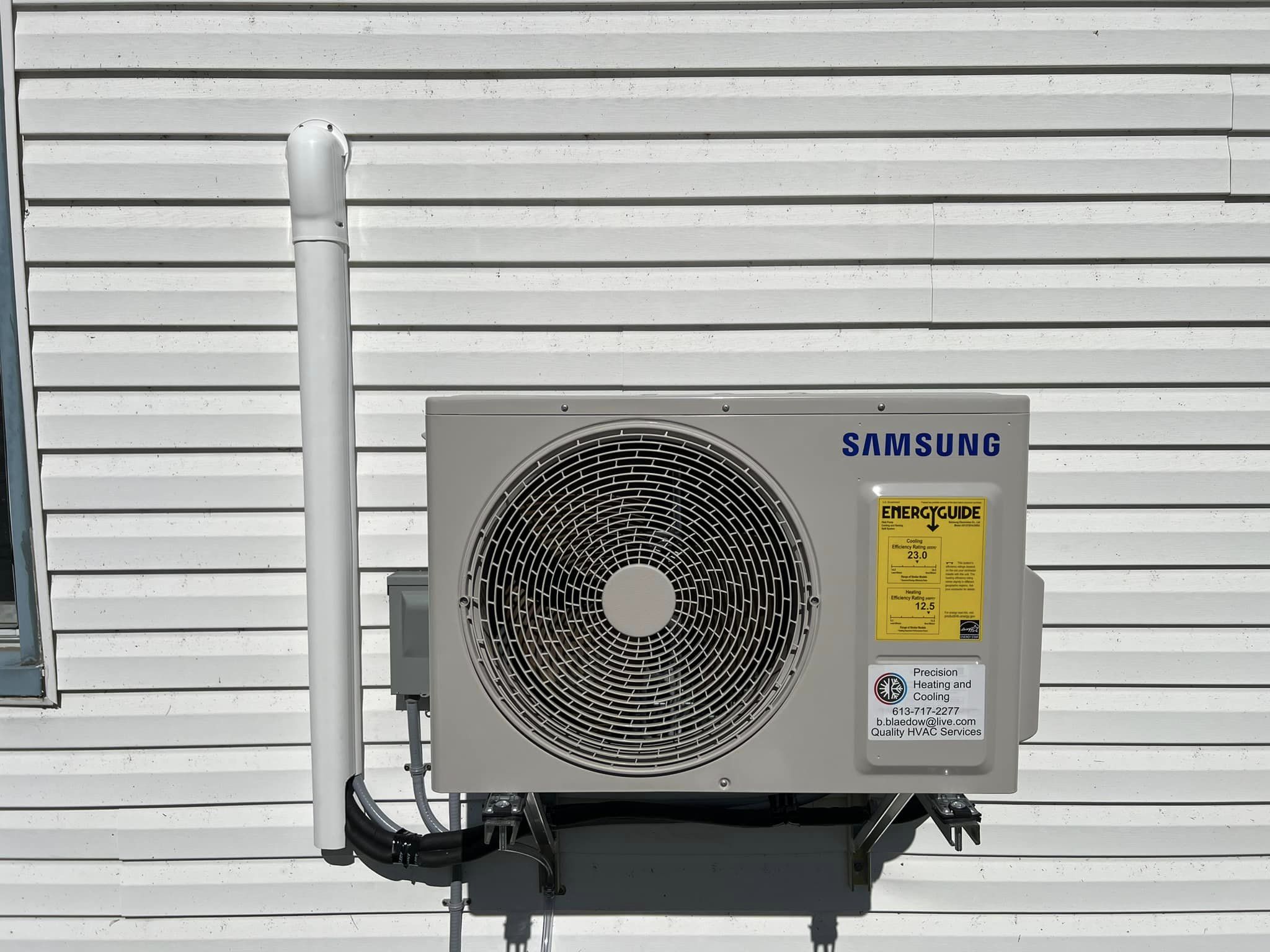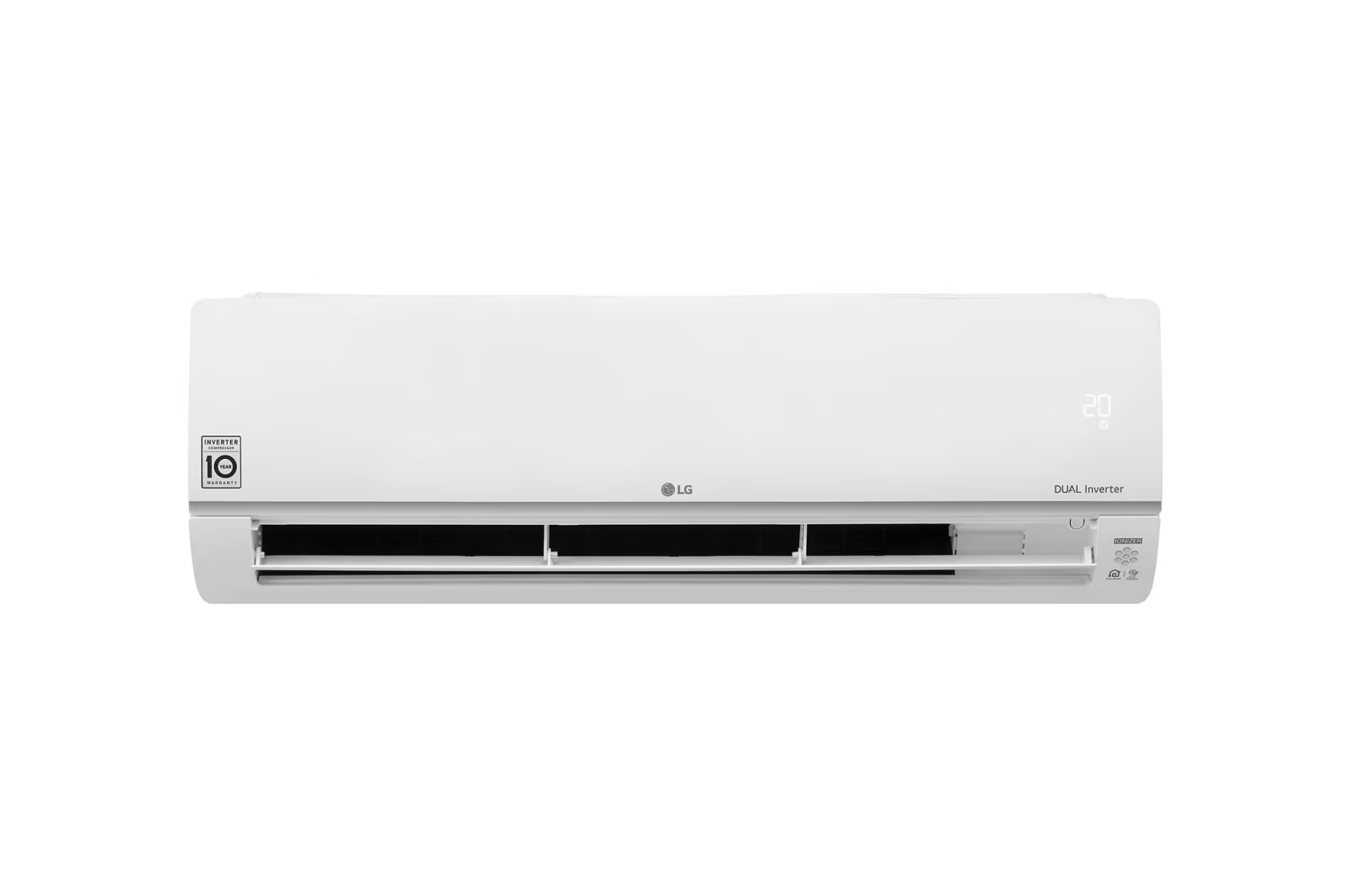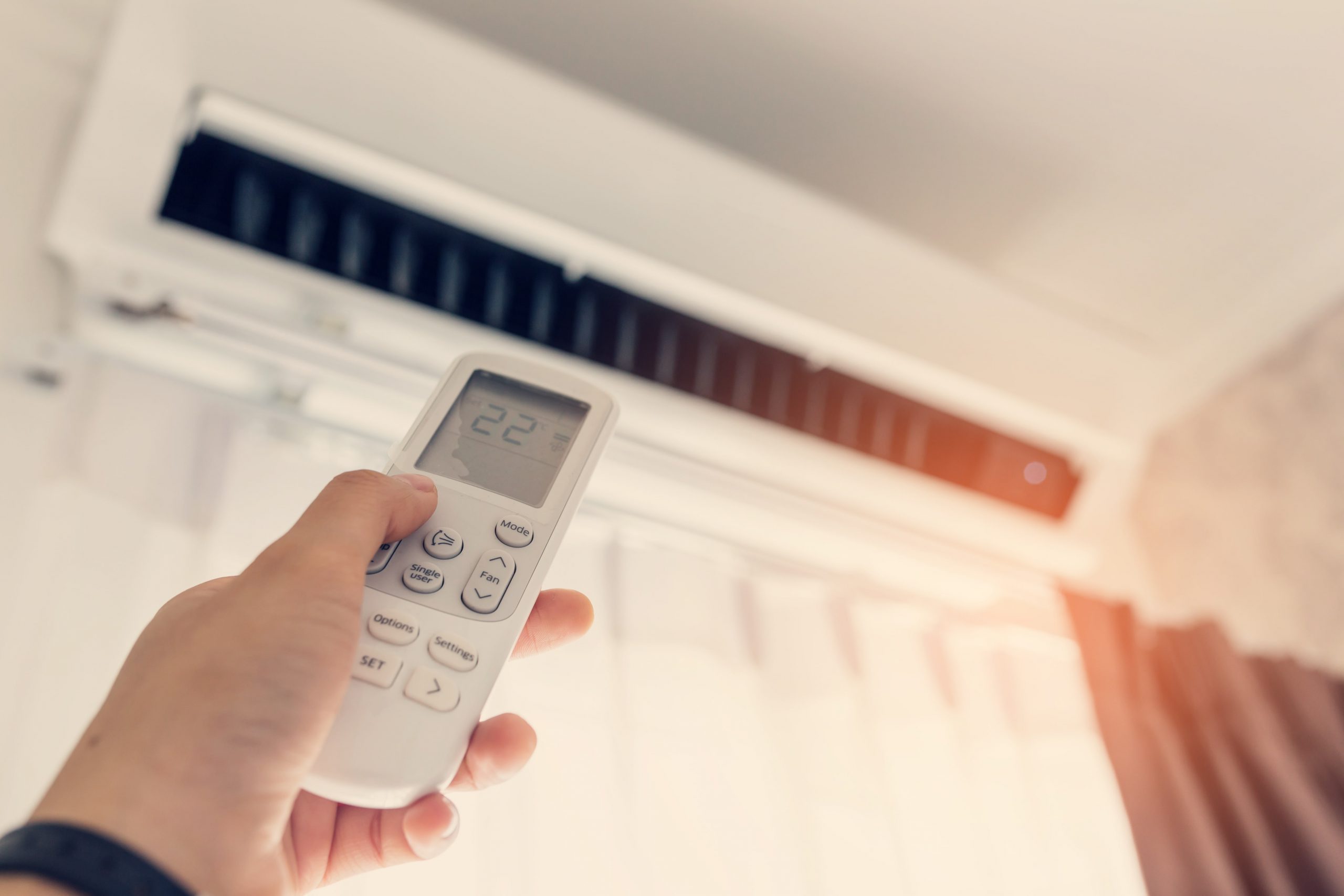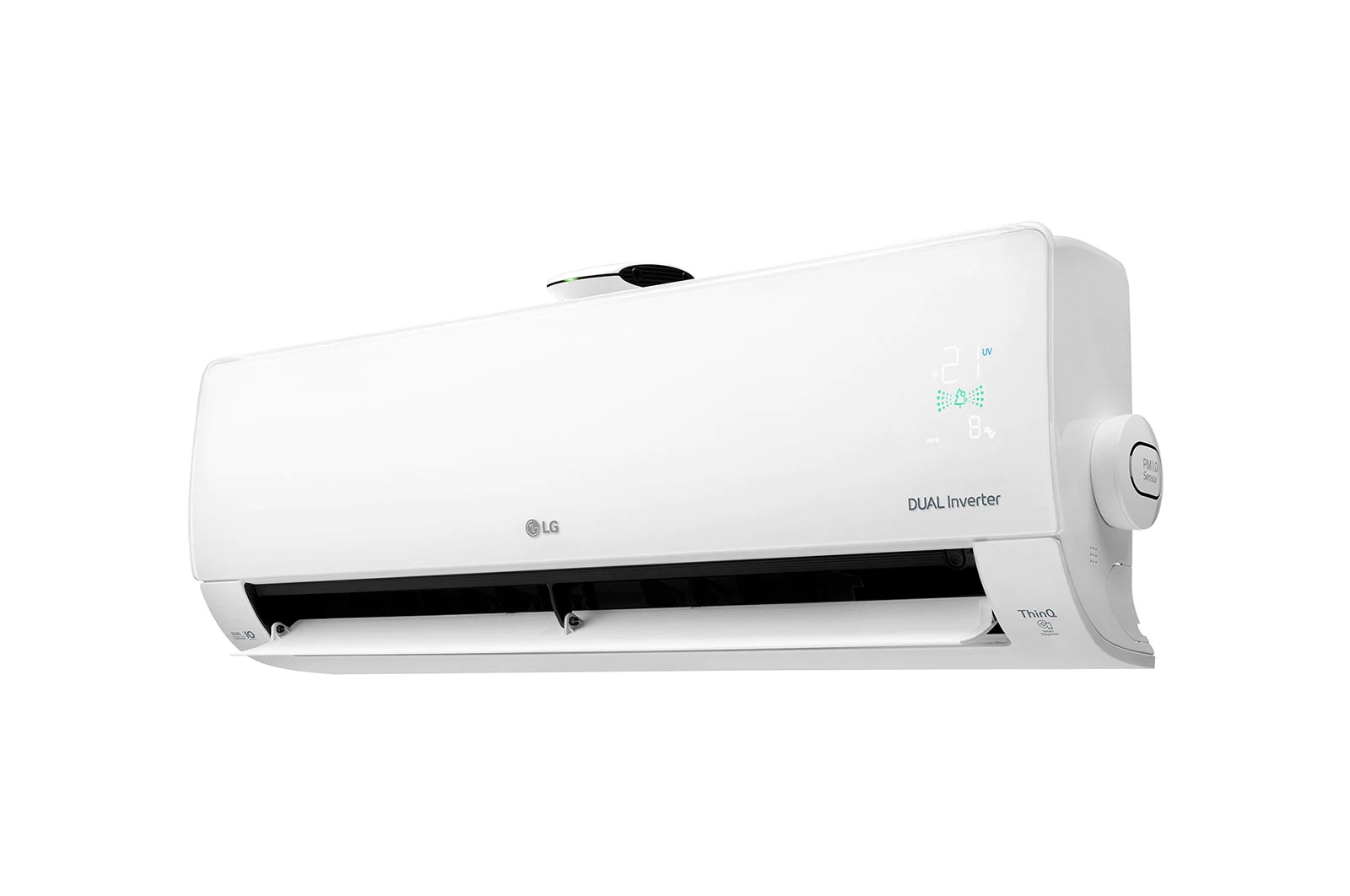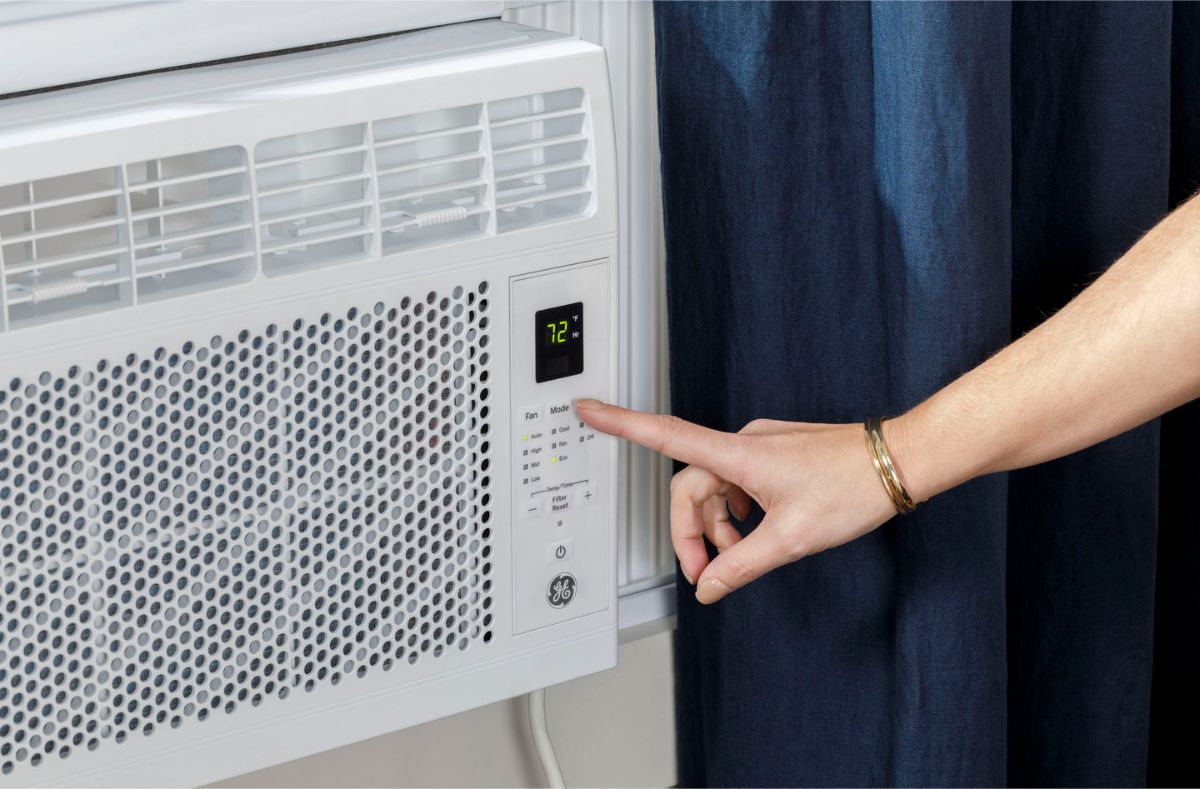Home>Home Maintenance>How To Fix A Noisy Air Conditioner
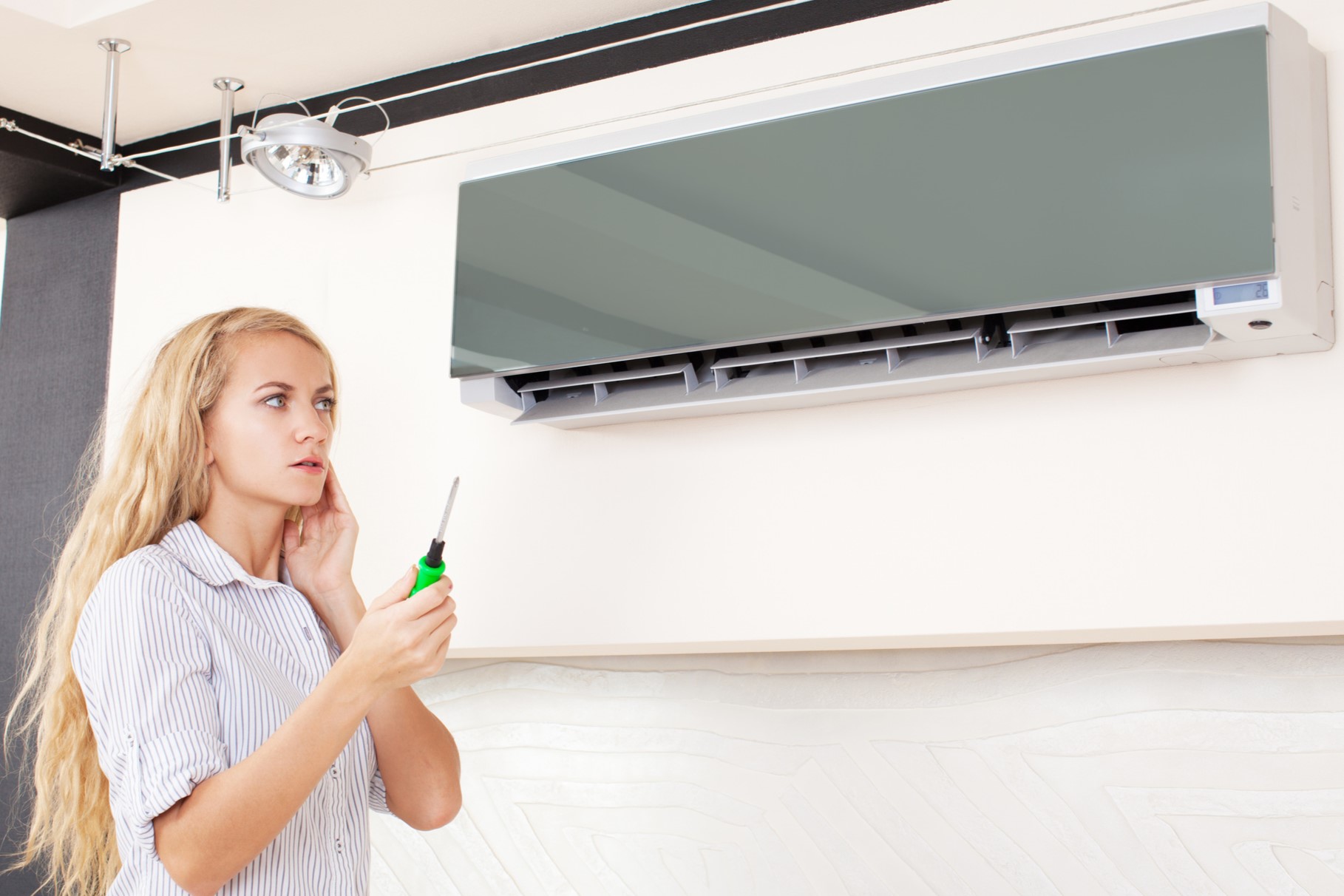

Home Maintenance
How To Fix A Noisy Air Conditioner
Modified: March 7, 2024
Learn how to fix a noisy air conditioner with our expert home maintenance tips. Say goodbye to annoying sounds and enjoy a peaceful environment in your home.
(Many of the links in this article redirect to a specific reviewed product. Your purchase of these products through affiliate links helps to generate commission for Storables.com, at no extra cost. Learn more)
Introduction
An air conditioner is an essential appliance in many homes, providing much-needed relief during hot summer months. However, a noisy air conditioner can quickly turn this source of comfort into a source of annoyance. The constant rattling, buzzing, or squealing can disrupt your peace and make it difficult to relax or concentrate.
Fortunately, fixing a noisy air conditioner is often a relatively simple task that can be tackled by homeowners with some basic knowledge and tools. In this article, we will explore the causes of a noisy air conditioner and provide step-by-step instructions on how to fix it.
Understanding the root cause of the noise is crucial to effectively addressing the issue. Some common causes include loose or misaligned parts, dirty air filters, lack of lubrication, loose screws or bolts, and debris accumulation in the condenser unit. By identifying the source of the noise, you can work towards a solution that will restore your air conditioner to its peaceful, quiet operation.
It’s important to note that while most noise issues can be resolved by homeowners, there are certain situations where professional assistance may be necessary. If you’re uncomfortable with performing these tasks or if the problem persists after troubleshooting, it’s best to contact a qualified HVAC technician for assistance. Now, let’s dive into the steps to fix a noisy air conditioner.
Key Takeaways:
- Keep your air conditioner running quietly by tightening loose parts, cleaning or replacing air filters, and lubricating moving components. Regular maintenance ensures a peaceful and efficient cooling system.
- When in doubt, seek professional help to diagnose and resolve complex air conditioner noise issues. Safety first, and enjoy a quiet and comfortable home environment.
Read more: Why Is Forced Air Heating Noisy
Understanding the Causes of a Noisy Air Conditioner
A noisy air conditioner can be attributed to various factors. Identifying the specific cause of the noise will help in determining the appropriate solution. Here are some common causes of a noisy air conditioner:
- Loose or Misaligned Parts: Over time, the vibrations produced by an air conditioner can cause screws, bolts, and other components to become loose or misaligned. This can result in rattling or buzzing noises. Checking for loose parts and tightening them can often resolve this issue.
- Dirty Air Filters: Air filters are responsible for trapping dust, dirt, and other particles from entering the air conditioner. However, when these filters become clogged, airflow is restricted, resulting in increased strain on the system. This can lead to whistling or wheezing sounds. Regularly cleaning or replacing the air filters can help eliminate this noise.
- Lack of Lubrication: Without proper lubrication, the moving components of an air conditioner can generate friction, resulting in squeaking or grinding noises. Lubricating the motor and other moving parts with appropriate oil or lubricant can help reduce this noise.
- Loose Screws or Bolts: Similar to loose or misaligned parts, loose screws or bolts can create rattling sounds. Checking and tightening all screws and bolts in the air conditioner unit can help resolve this noise issue.
- Debris Accumulation in the Condenser Unit: The condenser unit, located outside, can accumulate debris such as leaves, twigs, or dirt over time. This can obstruct the fan and cause it to produce a buzzing or clanking noise. Regularly inspecting and cleaning the condenser unit can alleviate this noise problem.
By understanding the causes of a noisy air conditioner, you can take the necessary steps to address the issue and restore peace and tranquility to your home. In the following section, we will outline the step-by-step process to fix a noisy air conditioner.
Steps to Fix a Noisy Air Conditioner
Fixing a noisy air conditioner involves a series of steps that can be done by homeowners with some basic tools. Follow these instructions to address the common causes of a noisy air conditioner:
- Check for Loose or Misaligned Parts: Start by inspecting the air conditioner unit for any loose or misaligned parts. Use a screwdriver or wrench to tighten any screws or bolts that may have come loose. Make sure that all components are properly aligned, including the fan blades, motor mount, and casing. This can help eliminate rattling or buzzing noises.
- Clean or Replace Air Filters: Remove the air filters and clean them using a vacuum cleaner or by rinsing with water. If the filters are too dirty or damaged, replace them with new ones. Clean filters promote proper airflow and prevent whistling or wheezing sounds.
- Lubricate Moving Components: Refer to the manufacturer’s instructions to locate the motor and other moving parts that require lubrication. Apply a few drops of lubricating oil or a recommended lubricant to these components to reduce friction and eliminate squeaking or grinding noises. Be careful not to over-lubricate.
- Tighten Loose Screws or Bolts: Inspect the entire unit for any loose screws or bolts and tighten them using the appropriate tool. Check the fan blades, motor mount, and other accessible areas for any signs of looseness or instability. This can help prevent rattling or clanking noises.
- Inspect and Clean the Condenser Unit: Turn off the air conditioner unit and carefully remove any debris or obstructions from the condenser unit located outside. Use a brush or hose to remove leaves, twigs, dirt, or other accumulated debris. This will ensure proper airflow and eliminate buzzing or clanking noises.
- Check the Fan Blades and Motor: Examine the fan blades for any visible signs of damage or misalignment. If the blades are bent or broken, they may need to be replaced. Additionally, inspect the motor for any unusual noise or vibration. If the motor is making excessive noise or appears faulty, it may require professional repair or replacement.
- Seek Professional Help if Needed: If the noise persists or you are uncertain about performing any of the above steps, it is advisable to seek the assistance of a qualified HVAC technician. They have the expertise to diagnose and resolve more complex issues with your air conditioner to ensure optimal performance and quiet operation.
By following these steps, you can address the common causes of a noisy air conditioner and enjoy a more peaceful and comfortable environment. In the next section, we will conclude the article.
Check for Loose or Misaligned Parts
One of the common causes of a noisy air conditioner is loose or misaligned parts. Over time, the constant vibrations produced by the unit can cause screws, bolts, and other components to become loose or shift out of alignment. This can result in rattling, buzzing, or vibrating noises that can be quite disruptive.
To check for loose or misaligned parts, you’ll need to inspect the air conditioner unit carefully. Start by turning off the unit and removing any power source to prevent any accidents or injuries. Then, using a screwdriver or wrench, carefully tighten any visible screws or bolts that may have come loose. Pay attention to areas where the noise seems to be originating from, such as the motor mount, fan housing, or casing.
Aside from tightening loose screws and bolts, it’s also essential to ensure that all components are properly aligned. Misaligned parts can create friction and contribute to the noise issue. Carefully examine the fan blades, motor mount, and casing, and make any necessary adjustments to align them correctly. This may involve loosening certain screws or bolts and then repositioning the parts before tightening everything back into place.
By checking for loose or misaligned parts and addressing them promptly, you can eliminate the rattling, buzzing, or vibrating noises caused by the air conditioner. Not only does this lead to a more peaceful environment, but it also helps maintain the proper functioning and longevity of the unit.
However, it’s important to exercise caution when working with the internal components of an air conditioner unit. If you’re unsure about any aspect of the process or if you encounter any difficulties, it’s best to consult a professional HVAC technician. They have the expertise and knowledge to handle complex repairs and ensure a safe and efficient resolution to the noise issue.
Now that you’ve learned about the first step in fixing a noisy air conditioner, proceed to the next section to discover how to clean or replace air filters.
Clean or Replace Air Filters
Air filters play a crucial role in maintaining the efficiency and functionality of your air conditioning system. Over time, these filters can become dirty and clogged with dust, debris, and other airborne particles. This not only reduces the quality of the air you breathe but can also contribute to a noisy air conditioner.
Clogged air filters restrict the flow of air, causing the system to work harder to maintain the desired temperature. This increased strain on the unit can result in whistling, wheezing, or hissing noises. Fortunately, addressing this issue is relatively simple and can be done by cleaning or replacing the air filters.
To clean the air filters, start by turning off the air conditioner and locating the filters. Depending on your unit, the filters may be at the air intake vents, in the air handler unit, or in the grille of the return air duct. Once you have located the filters, remove them from their housing.
If the filters are washable, gently rinse them under running water to remove any accumulated dirt and debris. Use a brush to gently scrub the filters if necessary. Allow the filters to dry completely before reinstalling them. It’s important to note that not all filters are washable, so check the manufacturer’s instructions or consult a professional if you’re unsure.
If the filters are not washable or are significantly dirty or damaged, it’s best to replace them with new ones. You can find replacement filters at hardware stores or from the manufacturer of your air conditioner. Make sure to choose filters that are compatible with your unit and follow the manufacturer’s guidelines for installation.
Regularly cleaning or replacing your air filters not only helps improve the air quality in your home but also ensures the efficient operation of your air conditioner. It reduces strain on the system, preventing unnecessary noise and extending the lifespan of the unit.
Now that you’ve cleaned or replaced the air filters, continue to the next section to learn about lubricating the moving components of your air conditioner.
Read more: How To Fix A Car Air Conditioner
Lubricate Moving Components
Air conditioners are equipped with various moving parts that require lubrication to operate smoothly and quietly. Over time, the lack of lubrication can cause these components to generate friction, leading to annoying squeaking or grinding noises. To address this issue, it’s essential to lubricate the moving parts of your air conditioner regularly.
Before you begin, make sure to turn off the air conditioner and disconnect the power source to ensure your safety. Consult the manufacturer’s instructions or user manual to identify the specific parts that require lubrication. Common components that may benefit from lubrication include the motor bearings, fan motor, and other moving parts.
Choose a high-quality lubricating oil or a recommended lubricant suitable for your air conditioner. Apply a few drops of the lubricant to the designated areas, ensuring that you don’t over-lubricate. Over-lubrication can attract dust and dirt, leading to further issues.
Be sure to follow the manufacturer’s guidelines for lubrication, as different air conditioners may have specific requirements. Some units may have oil caps or ports that need to be accessed for proper lubrication. If you’re unsure of how to proceed or are uncomfortable performing this task, it’s wise to enlist the help of a professional HVAC technician.
Lubricating the moving components of your air conditioner not only reduces friction and eliminates squeaky or grinding noises but also helps extend the lifespan of the unit. It ensures that the parts operate smoothly, minimizing wear and tear.
Regular maintenance, including lubricating the moving parts, is essential to keep your air conditioner in optimal condition. By addressing this step in fixing a noisy air conditioner, you’re one step closer to enjoying a quiet and efficient cooling system.
Next, we’ll discuss the importance of tightening loose screws or bolts in your air conditioner. Read on to learn more.
Regularly clean or replace the air filter in your air conditioner to reduce noise caused by airflow restrictions.
Tighten Loose Screws or Bolts
Loose screws or bolts can be a common culprit behind the noise generated by an air conditioner. Over time, the vibrations produced by the unit can cause these fasteners to become loose, resulting in rattling or vibrating noises. Addressing this issue involves inspecting the entire unit and tightening any loose screws or bolts that you come across.
Start by turning off the air conditioner and disconnecting the power source to ensure your safety. Carefully examine the unit and identify any visible screws or bolts that may be loose. Areas prone to loose fasteners include the motor mount, fan blades, casing, and any other accessible parts of the unit.
Using the appropriate screwdriver or wrench, tighten each loose screw or bolt. Take care not to overtighten, as this can strip the threads or damage the components. It’s recommended to use a hand tool instead of power tools to have better control over the tightening process.
Remember to check the fan blades for any signs of looseness or instability. If the blades wobble or appear bent, they may need to be adjusted or replaced. Properly securing the fan blades can help eliminate related rattling or buzzing noises.
Additionally, pay attention to the motor mount and casing. Ensure that all screws and bolts are securely tightened to prevent any movement or vibration that could contribute to the noise issue.
By tightening loose screws or bolts, you can significantly reduce or eliminate the rattling or vibrating noises in your air conditioner. This simple step helps maintain the stability and proper functioning of the unit, promoting a quiet and efficient cooling experience.
However, be cautious when handling the internal components of the air conditioner, especially if you’re not familiar with its setup. If you encounter any difficulties or are unsure about any aspect of the process, it’s recommended to seek the assistance of a professional HVAC technician.
Now that you’ve tightened any loose screws or bolts, continue reading to learn how to inspect and clean the condenser unit of your air conditioner.
Inspect and Clean the Condenser Unit
The condenser unit of an air conditioner is typically located outside and is exposed to various environmental elements. Over time, this unit can accumulate debris such as leaves, twigs, dirt, and dust, which can obstruct the airflow and cause buzzing or clanking noises. Inspecting and cleaning the condenser unit is crucial in maintaining the efficiency and quiet operation of your air conditioner.
Before you begin, ensure that the air conditioner is turned off, and disconnect the power source to prevent any accidents. Take note of the manufacturer’s instructions regarding the proper cleaning procedure specific to your unit. If you’re unsure, it’s recommended to consult a professional.
Start by visually inspecting the condenser unit. Look for any visible signs of debris accumulation, including leaves, dirt, or other foreign objects. Remove any loose debris using gloved hands, a brush, or a hose. Be gentle to avoid damaging any delicate components.
If the unit has a protective grille or cover, remove it carefully and clean both the grille and its surrounding area. Use a soft brush or a vacuum cleaner to remove any dirt or dust that may have accumulated on the surfaces.
If the condenser fins appear dirty or clogged, you can use a fin comb or a soft brush to carefully clean them. Be gentle to avoid bending or damaging the delicate fins. If the fins are severely damaged or bent, it’s best to contact a professional for repair or replacement.
After cleaning the condenser unit, ensure that all components are securely reassembled. Double-check that the grille or cover is properly in place and that all screws or fasteners are tightened appropriately.
Regular inspection and cleaning of the condenser unit not only improve the efficiency of the air conditioner but also promote quieter operation. By removing debris and ensuring unobstructed airflow, you can prevent unnecessary noise caused by the unit struggling to expel hot air.
Remember, if you encounter any challenges during the inspection or cleaning process or if you are uncomfortable working with the condenser unit, it’s essential to seek professional assistance. HVAC technicians have the necessary expertise and equipment to handle more complex maintenance tasks.
Now that you’ve inspected and cleaned the condenser unit, we’ll move on to the next step, which is to check the fan blades and motor. Continue reading to learn more.
Check the Fan Blades and Motor
The fan blades and motor of an air conditioner play a crucial role in circulating air and maintaining optimal cooling performance. If these components are damaged or malfunctioning, they can generate excessive noise. Checking the fan blades and motor is an important step in troubleshooting a noisy air conditioner.
Start by turning off the air conditioner and disconnecting the power source to ensure your safety. Access the fan blades by removing the protective cover or grille. Take a close look at the blades to check for any visible signs of damage, such as cracks, chips, or bending. Damaged blades can cause imbalance, leading to noisy operation.
If you notice any damage to the fan blades, it’s recommended to replace them with new ones. Contact the manufacturer or consult a professional technician for the appropriate replacement blades specific to your air conditioner model.
With the fan blades removed, inspect the motor for any signs of wear, damage, or excessive noise. Look for any loose wires, frayed insulation, or burnt smells, which could indicate a motor problem. If you notice any abnormalities or suspect an issue with the motor, it’s best to contact a professional HVAC technician who can diagnose and repair motor-related problems.
If the fan blades and motor appear to be in good condition, you can proceed to clean the blades. Dust and debris can accumulate on the blades over time, affecting their efficiency and contributing to noise. Use a soft brush or a damp cloth to gently clean the blades, removing any dirt or buildup that may be present.
After cleaning or replacing the fan blades, carefully reassemble them and ensure that they are securely fastened in place. Double-check that all screws or fasteners are tightened appropriately.
Checking the fan blades and motor is a crucial step in resolving a noisy air conditioner. By ensuring that these components are in good condition, you can promote smooth and quiet air circulation.
However, it’s important to remember that working with the motor and electrical components of an air conditioner can be hazardous. If you’re unsure about any aspect of the inspection or encounter any difficulties, it is highly recommended to seek professional assistance.
Now that you’ve checked the fan blades and motor, let’s move on to the final section to discuss when it’s necessary to seek professional help for resolving a noisy air conditioner.
Read more: How To Fix A Window Air Conditioner
Seek Professional Help if Needed
Fixing a noisy air conditioner can often be accomplished with some basic knowledge and troubleshooting. However, there are instances where the issue may be more complex or requires professional expertise. If you’ve followed the previous steps and are still experiencing persistent noise, it’s time to seek the assistance of a qualified HVAC technician.
A professional technician has the knowledge, skills, and specialized equipment to diagnose and resolve more complicated problems with your air conditioner. They can perform a comprehensive assessment of the unit, identify the root cause of the noise, and recommend appropriate solutions.
There are several situations where professional help may be necessary:
- Unfamiliarity or Inexperience: If you’re not comfortable working with the internal components of an air conditioner or lack the necessary expertise, it’s best to leave the repairs to a professional. They have the training and know-how to handle complex tasks safely and effectively.
- Noise Persists: If you’ve followed all the steps outlined in this guide and the noise problem persists, it indicates that there may be an underlying issue that requires professional attention.
- Electrical or Motor Problems: If you suspect an electrical problem, such as faulty wiring or a malfunctioning motor, it’s crucial to seek professional help. Electrical components can be dangerous to handle without the proper knowledge and expertise.
- Warranty Considerations: If your air conditioner is still under warranty, attempting DIY repairs may void the warranty. It’s advisable to consult the manufacturer or warranty terms and contact an authorized service provider.
By seeking professional help, you can avoid potential risks and ensure that the noise issue is properly diagnosed and addressed. HVAC technicians have the necessary tools and experience to handle complex repairs, ensuring the optimal performance and longevity of your air conditioner.
Remember, the goal is to create a comfortable and peaceful environment in your home. If the noise problem persists or if you’re unsure about any aspect of the repair process, don’t hesitate to contact a professional. They will help restore your air conditioner to its quiet and efficient operation.
With this final step, we conclude our guide on fixing a noisy air conditioner. By following the steps outlined in this article, you’ve taken the necessary measures to address the common causes of a noisy air conditioner and restore tranquility to your home.
Now, sit back, relax, and enjoy the cool and quiet comfort of your air conditioner.
Conclusion
A noisy air conditioner can disrupt your peace and comfort at home. However, with some basic knowledge and troubleshooting, you can fix the issue and enjoy a quiet and efficient cooling system once again. In this article, we covered the common causes of a noisy air conditioner and provided step-by-step instructions on how to address them.
Throughout the process, it’s important to remember safety precautions. Always turn off the air conditioner and disconnect the power source before performing any repairs or maintenance. If you’re unsure or uncomfortable with any step, it’s advisable to seek the help of a professional HVAC technician.
Understanding the causes of a noisy air conditioner, such as loose or misaligned parts, dirty air filters, lack of lubrication, loose screws or bolts, and debris accumulation in the condenser unit, allows you to identify and resolve the issue promptly.
We outlined the steps to fix a noisy air conditioner, including checking for loose or misaligned parts, cleaning or replacing air filters, lubricating moving components, tightening loose screws or bolts, inspecting and cleaning the condenser unit, and checking the fan blades and motor.
If the noise problem persists or you’re uncertain about performing any repairs, it’s recommended to seek professional help. HVAC technicians have the expertise and equipment to diagnose and resolve more complex issues, ensuring optimal performance and quiet operation.
By following these steps, you can restore peace and tranquility to your home and enjoy the cool comfort of your air conditioner without the annoyance of noise.
Remember, regular maintenance and care are essential to keep your air conditioner in top-notch condition. Routinely inspecting and addressing issues promptly will not only extend the lifespan of your unit but also improve its overall performance and energy efficiency.
We hope that this guide has been helpful in addressing the noise issue with your air conditioner. Now, sit back, relax, and enjoy the cool and tranquil environment that your properly functioning air conditioner provides.
Frequently Asked Questions about How To Fix A Noisy Air Conditioner
Was this page helpful?
At Storables.com, we guarantee accurate and reliable information. Our content, validated by Expert Board Contributors, is crafted following stringent Editorial Policies. We're committed to providing you with well-researched, expert-backed insights for all your informational needs.
